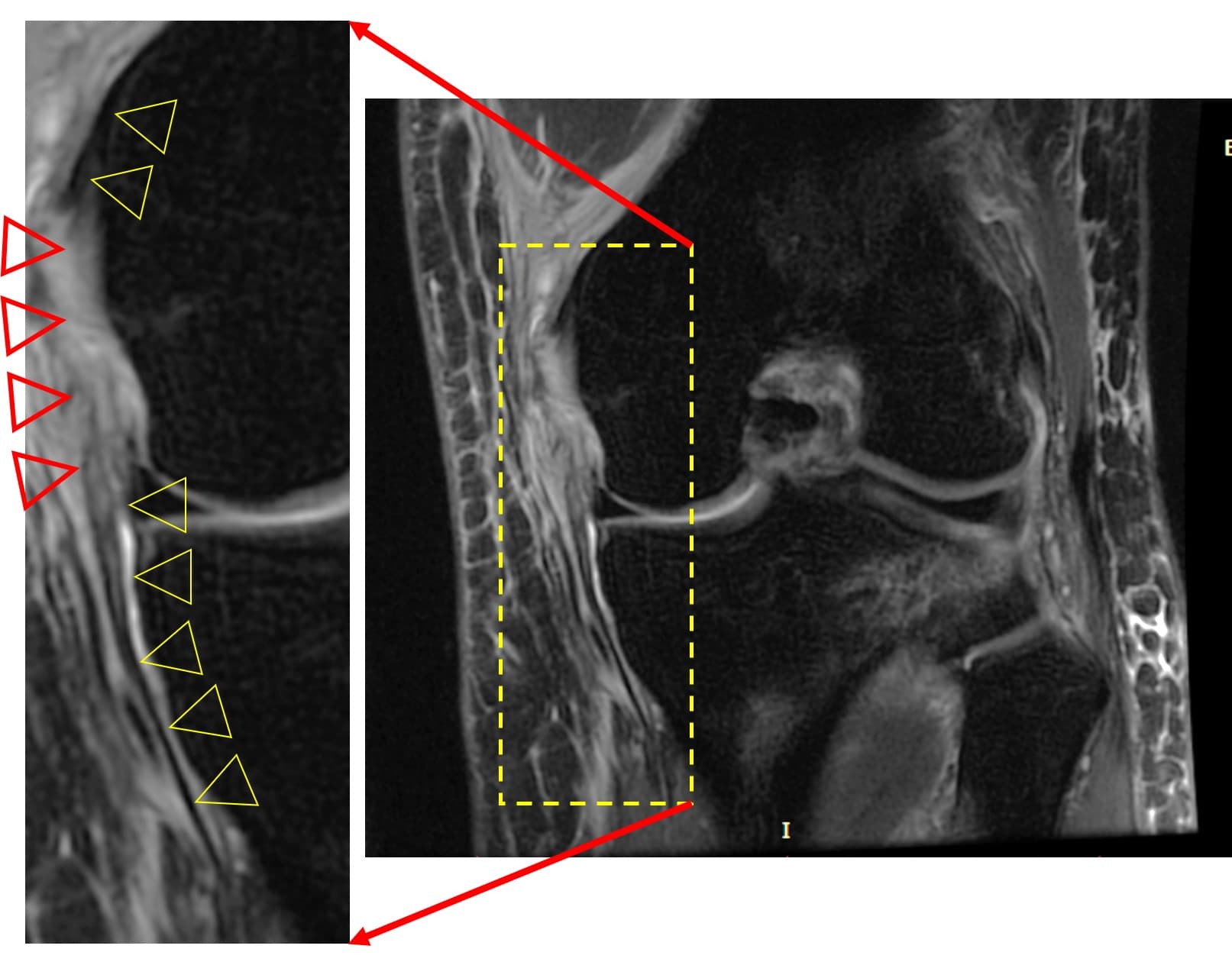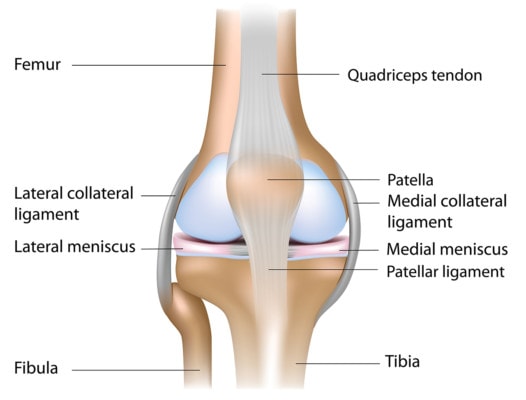Knee MCL Surgery? Not for this Avid Biker…
If you read this blog, you know that every once in a while I’ll write about an interesting patient result. While I see patients every day who are doing well and avoiding surgery, I also want to make sure that the patients I chose to write about have something unique and newsworthy. This is the case of a patient that I’ve featured here before for an ACL injury who recently re-injured that knee, but this time the MCL. What she was able to do in just a few short weeks is pretty remarkable.
An Old ACL Patient

Madeline is an old ACL tear patient who had a precise injection of bone marrow concentrate who only got healing of one of her two torn ACL bands. Despite that, she returned to high-level skiing without surgery. This was a better than surgery result as most surgeries would only replace one of the two damaged ACL bands with a tendon that is strung at a steeper angle than the original equipment. The ACL is between the dotted yellow lines in the serial images above (the white or grey is bad, dark is good). To see how this very technically challenging procedure is performed, see my video below:
A New Injury: The MCL

Madeline fell skiing in the backcountry and felt pain on the inside of the knee. While her previously treated ACL looked just fine, her MCL didn’t fare so well. Before we look at her new MRI, take a look at the MCL anatomy picture below:

Alila Medical Media/Shutterstock
The MCL aka the “Medial Collateral Ligament” is like two pieces of duct tape on the inside of the knee. Note above that the “Superficial MCL” is the longer red ligament. The “Deep MCL” is made of of the two shorter blue pieces that tie into the medial meniscus and the local bone at that site.
Now looking at Madeline’s MRI image above, we can see at the yellow arrows on the right of the ligament, a dark vertical line that goes from the top gets interrupted, and then picks back up on the bottom of the joint. The red arrows on the left of the ligament point to the torn part of the superficial MCL (no dark line). However, the deep MCL fibers look intact.
Precise Orthobiologics vs. Surgery
The big question was whether she needed surgery. She could have certainly spent 6 weeks or so in an MCL brace, but given how the superficial MCL looked, she was likely headed toward a surgical repair. The good news is that on an exam, her inside knee was more stable than not, likely due to the deep MCL fibers still being intact. Hence, she chose to get the MCL injected with high dose PRP using ultrasound guidance. Here’s the text (and pic at the top of the page) that I just got from her husband:
” The ACL is intact but her MCL is jacked”. That email from you 4 weeks ago shot down hopes for another summer. 😩 8-12 weeks of conservative rehab and recovery by conventional approaches. Well….then came orthobiologics! Can’t thank you enough, again, for your help and your clinics miraculous results! Only 3 weeks out from a PRP procedure for an MCL we were told “had a few fibers left” and she’s comfortably back on the bike. This is up Soda Creek by your Keystone house. We thought of you a lot while touring the valley and found some great new trails. We plan to begin training for the heli hiking trip in Canada that was all placed on hold with this ski injury 4 weeks ago. We have 5 weeks before we leave. Please thank Dr Fausel for his care and expertise!
The upshot? Madeline has dodged two surgery bullets in 4 years! Precision orthobiologics open up a new way to think about treating these types of injuries that have been traditionally only surgical cases.

If you have questions or comments about this blog post, please email us at [email protected]
NOTE: This blog post provides general information to help the reader better understand regenerative medicine, musculoskeletal health, and related subjects. All content provided in this blog, website, or any linked materials, including text, graphics, images, patient profiles, outcomes, and information, are not intended and should not be considered or used as a substitute for medical advice, diagnosis, or treatment. Please always consult with a professional and certified healthcare provider to discuss if a treatment is right for you.